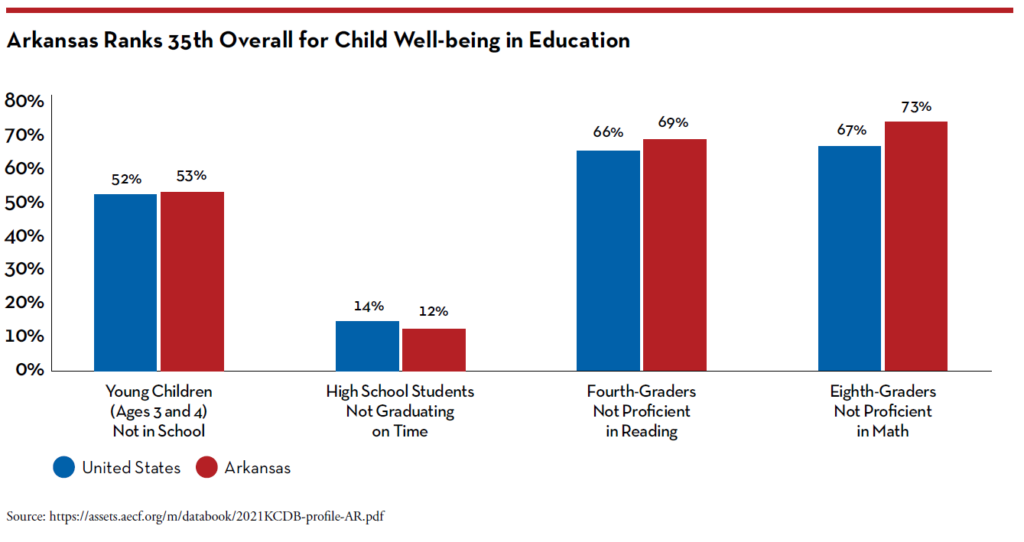American Rescue Plan
Through the American Rescue Plan (ARP), Arkansas received $1.2 billion in new, one-time funding for K-12 education. School districts have until September 30, 2024, to spend their funds. To make a significant change in our education system, these new resources should be aimed at the students who need it most.
Learning Loss
Most experts believe that certain groups of students, including Black, Indigenous and other People of Color (BIPOC) children, children from low-income families, English language learners, and children with special education needs likely lost academic ground during the pandemic. A few reasons for this learning loss include access to digital devices and the internet, digital literacy of parents, and the economic impacts of the pandemic on students’ families.
Out-of-School Programs
Before-, after- and summer-school programs are vital to student success because they support academic and emotional development, keep kids safe, improve their long-term outcomes as adults, and provide parents with peace of mind and help them keep their jobs. Arkansas’s existing programs reach a fraction of the children who need them.
Effective and Equitable School Discipline
BIPOC children face discriminatory school discipline practices, including higher rates of expulsions and out-of-school suspensions for the same offenses as their White peers. That helps feed the school-to- prison pipeline. Arkansas also still allows the use of corporal punishment for most students. Other practices, such as restorative justice, are more effective at keeping kids in school, improving behavior, and on track to graduate.
Community Schools Model
Community schools can promote school success by serving as the hub of local neighborhoods/communities. They are characterized by strong partnerships; high parental involvement; and supports for students, including health.
Strong K-12 Public Schools
Despite the 2002 Lake View Supreme Court decision on educational adequacy, major gaps remain in achievement and educational opportunities, as do disparities in quality and school facilities and teacher pay. Recent state investments in public education have been at levels below what many consider to be adequate, and more tax dollars are being shifted to schools that are not accountable to the public, including charter and private schools.


You must be logged in to post a comment.